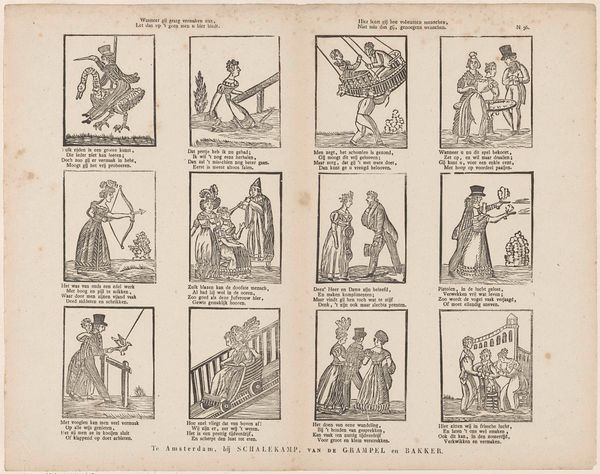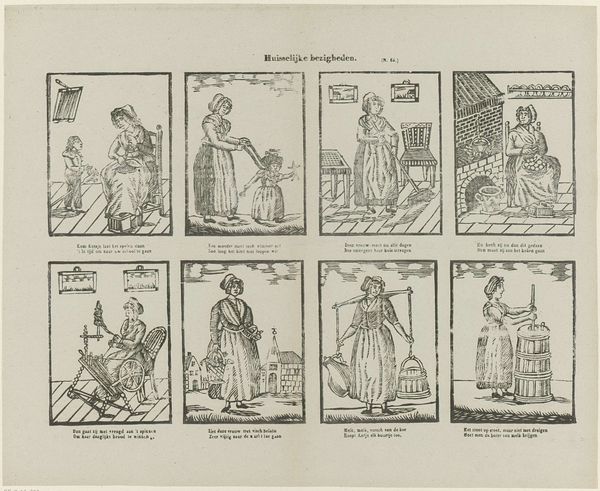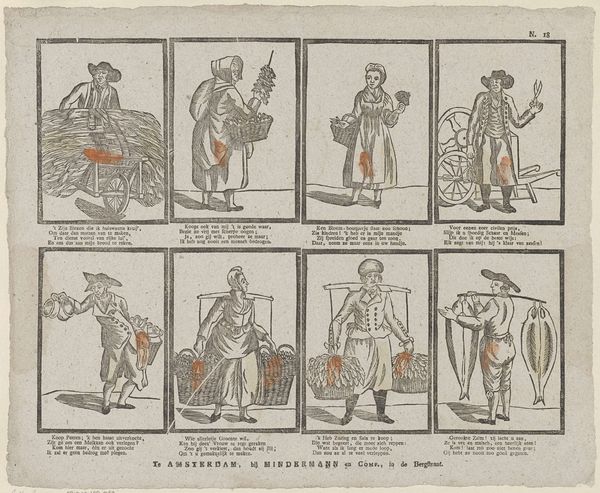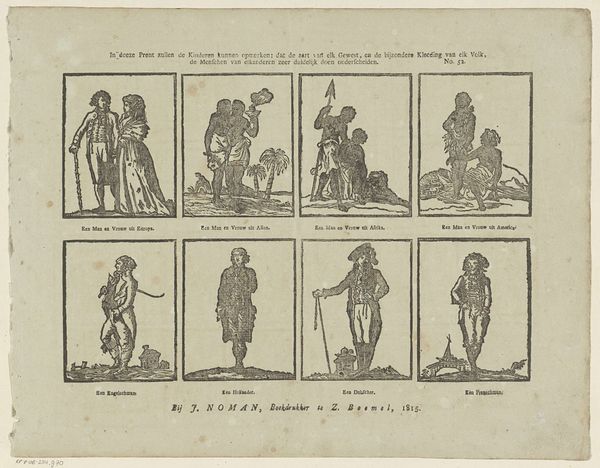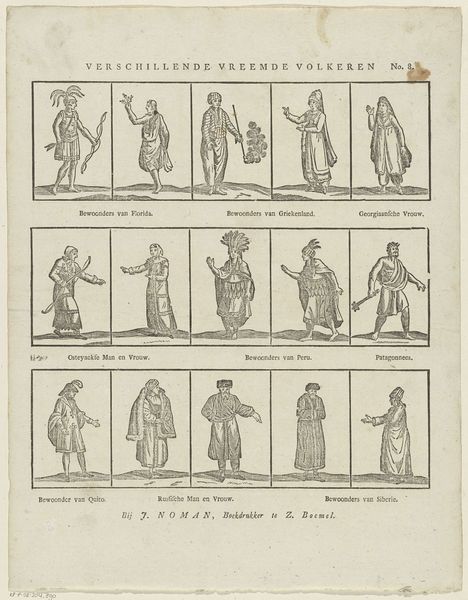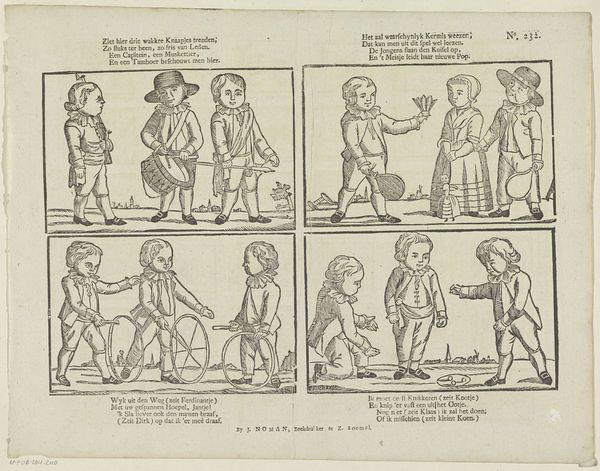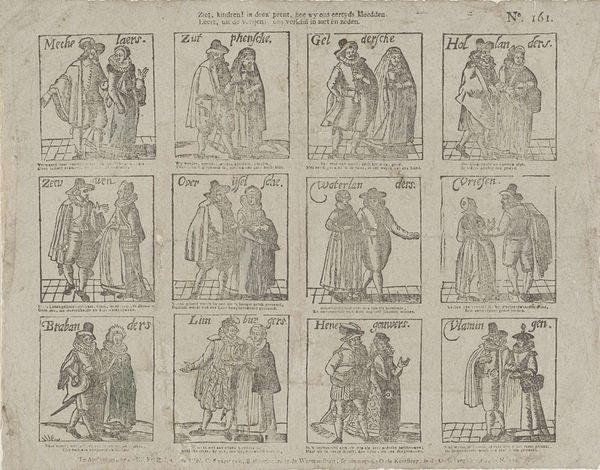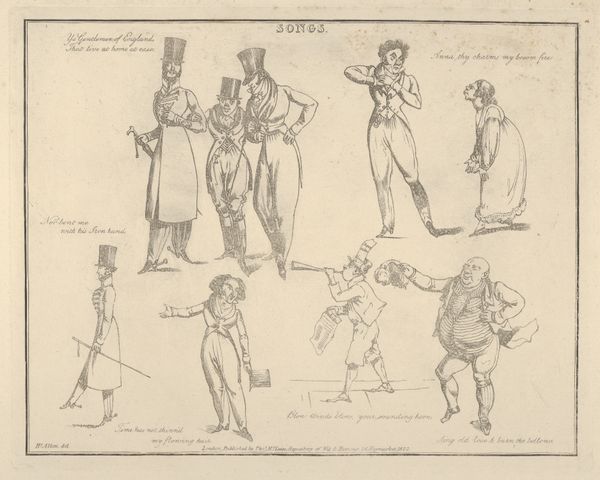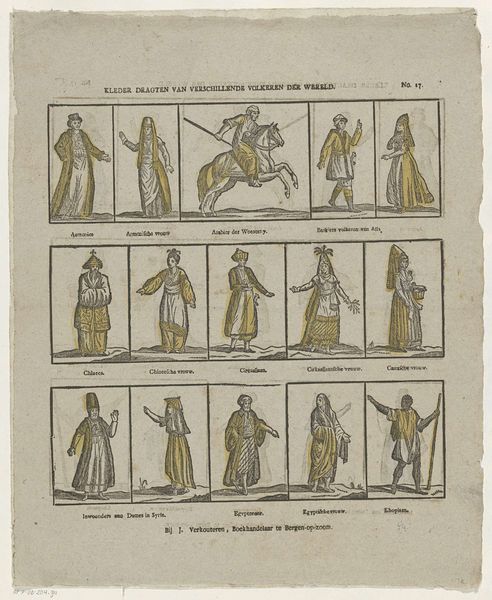
Men stopte u eertyds, lieve jeugd! slechts prullen in de hand, / Monstreuse vodden, zonder smaak, zelfs schaadlyk voor 't verstand; / Thans yvert wààre kunst voor u, terwyl ze uw nut beoogt, / Elk prentjen is een tekenles, die gy wel volgen moogt 1806 - 1830
0:00
0:00
drawing, print, paper, ink, engraving
#
drawing
#
narrative-art
# print
#
paper
#
ink
#
comic
#
genre-painting
#
history-painting
#
engraving
Dimensions: height 318 mm, width 410 mm
Copyright: Rijks Museum: Open Domain
This print, made by Johan Noman in the late 18th or early 19th century, is a fascinating example of how printed media was used for education and social commentary. The etching process, with its fine lines and reproducible nature, was ideal for distributing visual lessons widely. Here, Noman uses the format to critique what he sees as frivolous distractions for youth, contrasting them with the virtues of "true art." The material itself – the print – becomes a tool for moral instruction. Consider the labor involved: from the artist's hand in creating the original design to the printer's skill in transferring it onto paper. This was a form of mass production, intended to shape young minds and instill particular values. The print invites us to reflect on how art and craft can be intertwined with social agendas, subtly shaping our perceptions and behaviors.
Comments
No comments
Be the first to comment and join the conversation on the ultimate creative platform.


